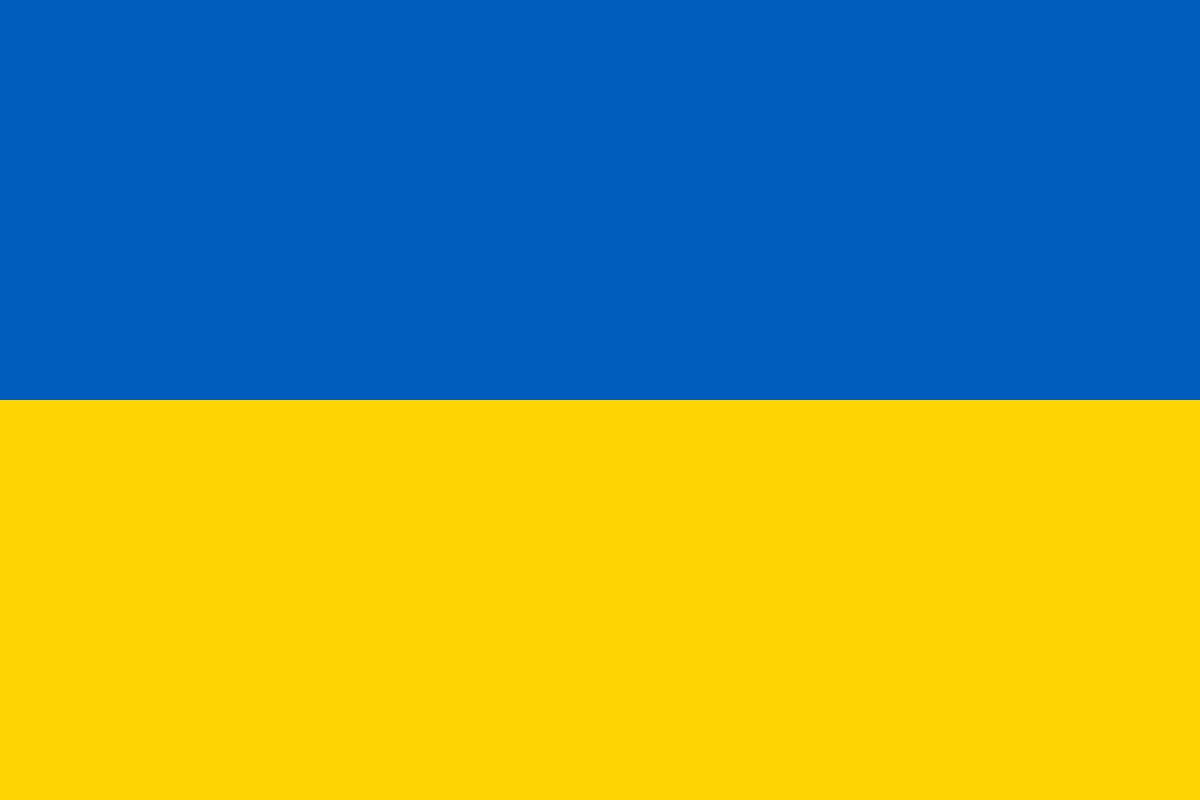The flag of Ukraine holds a rich and intricate history that mirrors the nation's trials, dreams, and collective identity. Its blue and yellow hues find their origins in the age-old colors of Kyivan Rus', a medieval East Slavic realm pivotal in shaping modern Ukraine's cultural and historical bedrock.
Symbolism and Significance:
- Blue: This shade embodies the expanse of clear skies and signifies purity, embodying the Ukrainian populace's aspirations. Blue encapsulates the yearning for freedom, spirituality, and a brighter tomorrow. The color is emblematic of unity, mirroring Ukrainians' desire to forge a cohesive national entity.
- Yellow: The sunny yellow hue is emblematic of the nation's bounteous fields, abundant harvests, and agriculture's vital role in Ukraine's economy and lifestyle. It evokes the warmth and illumination of the sun, along with the land's inherent wealth.
Evolution and Variation:
Throughout the annals of Ukraine's history, the blue and yellow flag has undergone evolution and adaptations due to shifting political landscapes and external influences. Despite alterations during periods of foreign dominion, the foundational concept of blue atop yellow endured. The fervent efforts of Ukrainian nationalist movements in the 19th and 20th centuries acted as guardians of the blue and yellow flag, championing its perpetuation and widespread adoption.
National Identity and Sovereignty:
The Ukrainian flag weaves its threads into the fabric of the nation's pursuit of autonomy and self-determination. It emerged prominently during pivotal junctures of political transformation, such as the proclamation of the Ukrainian People's Republic in 1917 and Ukraine's decisive assertion of independence from the Soviet Union in 1991. The flag symbolized the unwavering resolve for self-governance and the safeguarding of a distinctive cultural heritage.
Cultural Embrace:
Beyond its role as a national standard, the blue and yellow colors have transcended to become an integral part of Ukrainian cultural expression. From traditional attire and intricate embroideries to intricate crafts and artistic creations, these colors feature prominently. They are an omnipresent sight in festivities, ceremonies, and cultural events, visually representing the essence of Ukrainian identity and collective pride.
Global Recognition:
Formally adopted on January 28, 1992, following Ukraine's declaration of independence from the Soviet Union, the flag gained international recognition as the symbol of the Ukrainian nation. It adorns official edifices, diplomatic missions, and international gatherings, representing Ukraine's presence on the global stage.
Contemporary Significance:
Today, the blue and yellow flag continues to resonate as a potent emblem of Ukraine's tenacity, harmony, and unyielding spirit. It stands as an enduring reminder of historical trials and triumphs, simultaneously propelling the nation towards a future defined by democracy, prosperity, and liberty.
In summation, the flag of Ukraine encapsulates a profound narrative of the country's past, culture, and ambitions. Its elegantly uncomplicated design has profoundly influenced the shaping of Ukrainian identity, serving as a conduit for unity and shared aspirations. A testament to the enduring vigor of the Ukrainian people, the flag embodies their commitment to a future bathed in luminance and promise.
Last Updated on: September 24, 2025

